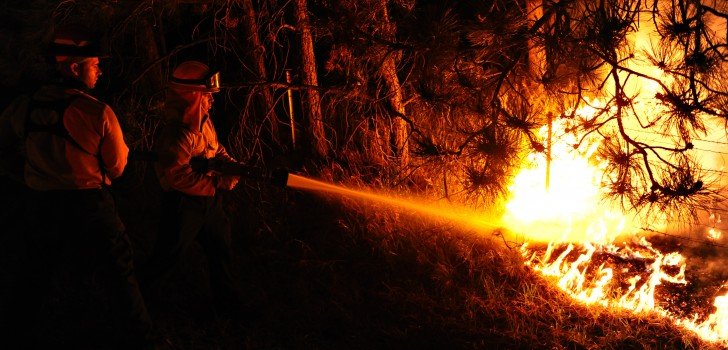More than 30,000 firefighters, the largest number ever mobilized, are battling wildfires across the western United States, but according to the U.S. Forest Service it is still not enough as continuing outbreaks overstretch available resources.
A Service spokesman said 200 members of the military are being added to the fight, as are Canadian firefighting forces, and there is a possibility that experienced firefighters from Australia and New Zealand will be flown in.
The fires are raging in five states- Idaho, California, Oregon, Montana and Washington, and so far 7.1 million acres of land has been burned out with another 1 million currently ablaze.
The spokesman said “This is the earliest the number of national acres burned has been more than 7 million in the past 20 years” and in intensity these are the worst wildfires seen in the past decade.
The United States is at Level 5 wildfire preparedness — the highest.
The spokesman said particularly worrying is developments in Idaho and Montana where 35 large fires are raging. Experts say the fires in these two States, and also in the Pacific Northwest, have been started by lightning strikes from rain -free thunderstorms.
Rob Allen, deputy incident commander said “Competition for resources right now is extremely tight. As of yesterday there was outstanding orders for crews of 160 crews. They’re still looking for, there are no more shower units, there are no more catering units. A lot of the stuff we rely on to come in and give us a hand is being used….The truth of the matter right now is that between Oregon, Washington, Northern California, Idaho got very busy, Nevada’s busy, Colorado’s busy, there’s just a real strain in all the resources we have right now”.
Two weeks ago the U.S Forest service warned that predicted fires would up 50 percent of its budget, but as predictions have proven to be understated, it is likely two thirds of the budget will disappear.
The Forest Service spokesman said $100 million per week was spent when the wildfire preparedness level was at 5.
U.S. Agriculture Secretary Tom Vilsack said “Fire seasons are growing longer, hotter, more unpredictable and more expensive every year, and there is no end in sight. Within just 10 years, two out of every three dollars the Forest Service gets from Congress will be spent on fire programs, which leaves much fewer resources for the very restoration projects that have been proven to reduce the risk of wildfire and improve forest health.”
He warned that “We are at a tipping point. Congress must change the way it pays for wildfires by providing a fiscally responsible way to treat catastrophic wildfires more like the natural disasters that they are, end fire transfers, partially replenish our capacity to restore resilient forests, and protect lives and property against future fires.”
Stay Connected